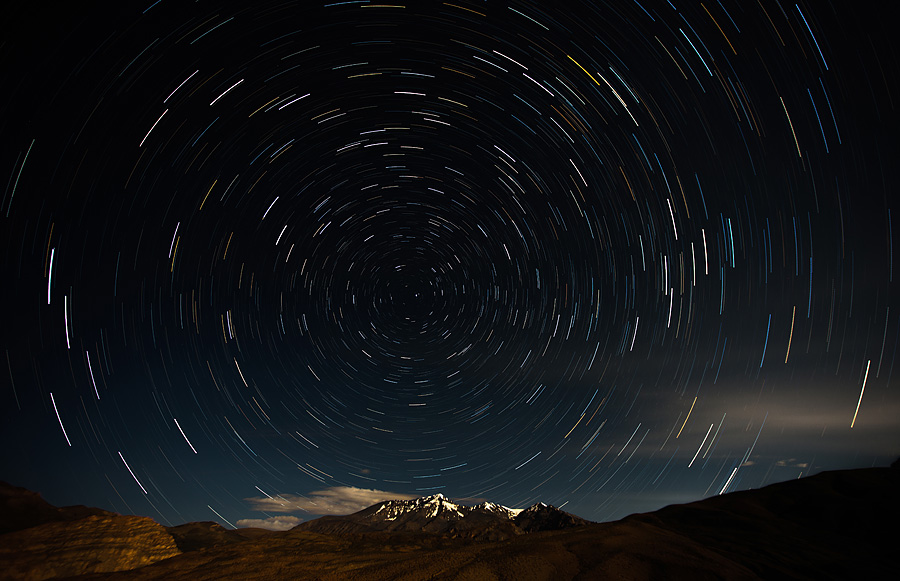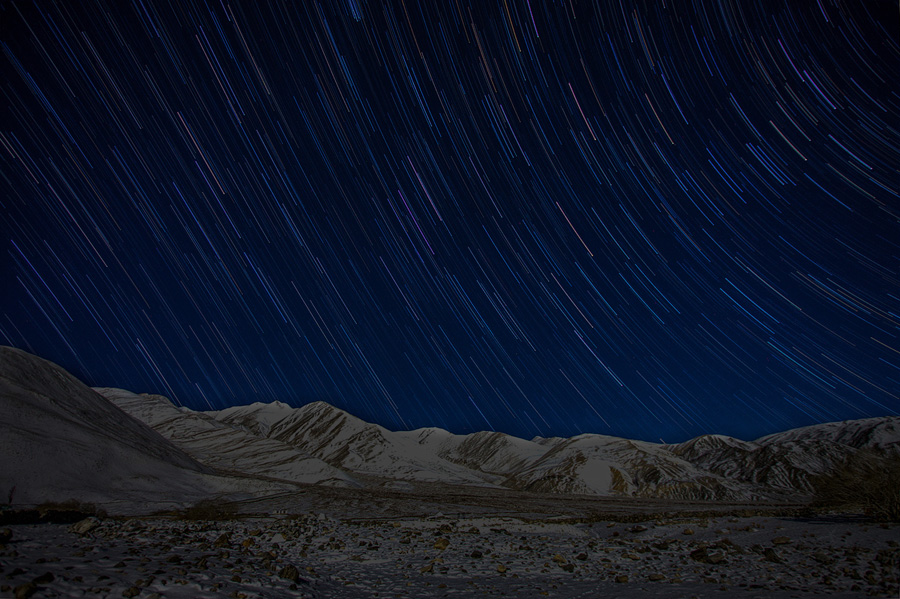If you have ever tried photographing star-trails or researched on the techniques, you may have been told time and again to choose a new moon day for your work. The reason this is suggested is simple – you get to see maximum number of stars in the sky on a night when there is no moonlight.

Personally, I have always shied away from using this logic. On moonless days, although you do get an image of a sky filled with many stars, no details of the landscape get captured. No matter where you are shooting from and however magnificent the place you are at, all you can capture in your camera is complete darkness on the ground. This takes away any location context that you can include into your images. A photograph of star trails on a moonless day made in Sierra Nevada or Andes or the Himalayas look exactly same, adding no special value to the location you are at.

However, if there is some moon light–perhaps when moon is about a half circle–you can capture the details on ground as well as stars in the sky. Indeed, the density of stars in the sky is much lesser, but I feel that it is a sacrifice worth making. Imagine photographing star-trails along with snow-peaks, a beautiful lake or waterfall. Or think about nothing but a black band at the lower part of the image instead place of all these. Which one would look better?

The three images posted here should give you an idea. This may not always be true, though. There are times when photographers use light painting to light up part of the landscapes (such as a tree or a house) and come out with brilliant images on a moonless day. But I think that for a large number of situations, it pays to have some moonlight.

3 Comments